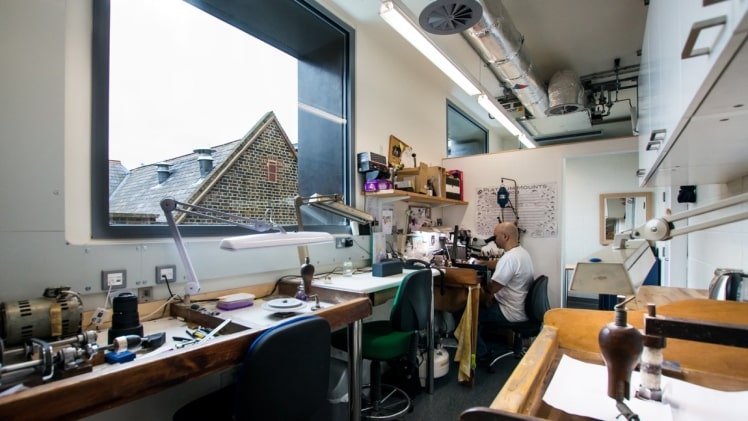What should a goldsmith workshop be like? And today we are going to talk… about what a goldsmith workshop should be like…
Because in the art of carving and carving artistic objects regardless of what they are, what use they have, what material or alloy they are made of and with what technique they have been worked, the space in which both the master goldsmith and an amateur student newly initiated in this trade can put into practice all their knowledge in this ancient art that dates back to no more and no less than prehistory.
Why is the workspace so important?
Because, as in the rest of the professions and occupations, in goldsmithing as in any other artisan trade, those who practice this profession, even if they do not suffer intense and severe physical wear and tear as occurs, for example, in professions related to the construction industry, do not they are exempt from running certain risks in the development of their activity, especially due to the use of mechanical tools that may threaten their safety.
For this reason, in goldsmithing, occupational risk prevention becomes a priority and the adaptation of the work space is the first step that must be taken.
A goldsmith workshop must meet certain requirements and certain environmental conditions such as:
– Have a large and open space whatever its size to be able to organize all the materials, machinery and tools, especially the big ones like a Rolling Mill with which we work.
– Have large windows through which natural light can enter throughout the day but, if this is not possible, have lighting sources that are sufficient and adequate to work comfortably in order not to suffer alterations visuals that can impair our sight.
– Maintain an environment free of congestion and bloating by ventilating the space daily and regulating the temperature to avoid an atmosphere of excessive heat or extreme cold that will unduly hinder our work.
– Install a spacious and clear work table in an area that is not passing through to avoid unnecessary interruptions and be able to work with complete peace of mind, trying to clean and tidy it after use.
– Make use of an ergonomic chair, generally an adjustable stool, in which we can adjust the height to position ourselves correctly with respect to the work table, avoiding bending the back and neck and placing the arms at chest height, thus losing margin of maneuver and agility in the task.
– Use personal protective equipment, which stands for PPE, basically consisting of protective goggles, a mask and gloves with which we will avoid suffering any type of eye and respiratory injury as well as possible injuries caused by improper use of the tools or a simple oversight.
– And, last but not least, it is advisable to set the workspace with everything that can make us feel more comfortable while we work, such as playing music in the background.
On the other hand, and although this has nothing to do with the work space but with the prevention of occupational risks, we must not forget to take care of body posture during working hours to avoid overloading the muscles.
To do this, a break of approximately five minutes duration and stretching should be done every half hour before and after each session, since in this way we will reduce muscle tension, improve the coordination of movements, optimize our performance and, most importantly, we will get rid of possible unnecessary injuries.

